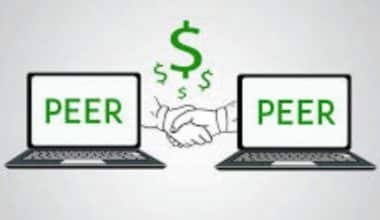Human Resources Information System (HRIS) software is a technological solution that enables us to manage and maximize routine HR tasks.
The tool is essential for organizations to manage their overall HR objectives. It assists managers and HR executives in allocating their time and resources more effectively, leading to higher productivity and more successful endeavors. Therefore, by organizing employee data, automating manual tasks, and creating data-driven reports, HR software can speed up automation initiatives. It can do all of this electronically, do away with the need for paper documents, and help your staff with crucial duties like performance reviews, employee information updates, and time tracking.
It assists businesses in managing the administration of their workforce. Human resources managers use HRIS systems to manage payroll, training programs, and talent acquisition. To determine the top HRIS systems overall for small businesses, we analyzed and rated dozens of the most popular HRIS systems currently available.
We will outline the top human resource management programs in this article to assist you in selecting the best HRIS software for your requirements. We’ve compiled the best options.
What Kind Of Software Is HRIS?
HRIS software is a centralized data repository for employee information, with features such as payroll, workforce management, benefits, administration, recruiting, and learning management. It helps businesses meet core HR needs and improve productivity.
What Does HRIS Software Do?
HRIS is used by HR managers so they can automate and streamline many of the routine tasks that consume a lot of time and resources. By removing manual processes, boosting efficiency and accuracy, and enhancing data accuracy, HRIS systems can also help lower administrative costs.
Furthermore, HRIS systems provide accurate data insights that allow HR managers to make better decisions and support business strategies. They also provide an organized, efficient, and centralized tool for managing employee records.
What Are The Types Of HRIS?
HRIS software can easily cross over into three different categories. The following are some basic categories that can be used:
#1. Human Resources Information Systems (HRIS)
HRIS software focuses on the tactical and logistical; at the most fundamental level, it stores data pertaining to human resources departments, such as employee information, wages and benefits, organizational charts, and policies and procedures. Therefore, regardless of whether it’s on-premises or in the cloud, it centralizes everything in one place.
#2. Human Resources Management Systems (HRMS)
HRMS software is a more advanced HRIS that has features like management and automation components like time tracking, performance review procedures, and onboarding schedules.
#3. Human Capital Management (HCM)
With additional tools focusing on macro-level processes and people strategy, such as employee engagement, career development, and overall productivity, HCM is more of a comprehensive suite of the aforementioned.
What Are The Five Most Popular Applications Of An HRIS?
The best use cases and noteworthy features for each of our top HRIS picks are highlighted in the brief descriptions of each system that are provided below. For each, there is a brief description of their user interface so you can understand its functions properly.
#1. Monday.com
Monday.com is an HRIS platform that gives HR teams the ability to use drag-and-drop technology to run all of their HR processes and workflows. A selection of HR-specific templates is also included in the tool to help users get started.
Furthermore, it is a tool that allows hiring managers to track applicants and update the status of applications. It also includes a pre-made template for employee onboarding, which uses no-code automation to notify team members of tasks. Additionally, the vacation tracker allows employees to schedule vacation time.
Pricing: Monday.com starts at $8 per user per month. There is also a 14-day free trial period.
#2. Deel:
Deel is a global HRIS solution that eliminates borders from the talent pool, handles payroll and benefits, and provides features such as contract management, expense reimbursements, and analytics.
Furthermore, it is an HRIS platform that provides a comprehensive overview of benefits, perks, and salary expenses. It also offers global payroll, global mobility support, integrated Slack tools, and advanced integrations. Additionally, it integrates with major HR, ATS, and accounting platforms and complies with SOC2 and ISO 27001 security standards. It offers flat-rate pricing and a free demo.
Pricing: For businesses with up to 200 people, there is a free version with flat-rate user pricing.
#3. Rippling:
Rippling is an online HRIS system with features like payroll, time and attendance, learning management, benefits, talent management, PEO, pulse surveys, and workforce analytics. It connects business systems to one source for employee data, automates manual work, and creates policy rules.
Furthermore, it has a role-based permission system that allows users to control access to specific Rippling services and third-party apps, and it integrates with more than 500 apps, allowing users to enter data once and see it updated everywhere.
Pricing: Rippling costs $8.00 per user/month and offers a free demo.
#4. Sapling
Sapling is a people operations platform that automates workflows for onboarding, offboarding, and using people data across existing systems.
Additionally, it offers native integrations with a variety of other software, including applicant tracking systems, payroll software, time tracking software, and more. The tool also has an API and webhooks available for further integration options.
Pricing: Onboarding with Sapling starts at $4.92 per user per month, and the full core HRIS experience starts at $6.99 per user per month based on 100 users.
#5. Zenefits
Zenefits platform combines core HR functions with payroll, employee benefits, and time-off tracking, and offers automated onboarding, compensation management, performance management, and employee engagement tools. Benefits management is also included for free.
Additionally, it integrates with 45+ applications and costs $8/employee/month, with add-ons available for full payroll services, HR and payroll advisory services, and the insurance broker option.
Pricing: A free demo and a 14-day free trial are available.
Zenefits HR
What Is The New Name For HRIS?
HRIS system and HRMS, or human resources management system, are two additional names that are frequently used. These are all alternative names for the same concept. These programs collectively go by the acronym HCM or human capital management.
What Are The 5 Benefits Of HRIS?
The advantages of HRIS range from streamlining HR procedures to directly impacting a business’s bottom line by altering how you work. Here are the top 5 advantages of implementing HRIS in your company:
#1. HR processes are done from a single system
HR teams can hire, onboard, manage, and engage employees using an HRIS as a single, integrated solution. Older data management techniques like spreadsheets, manual operations, and legacy platforms are cumbersome, slow, and unsustainable as your business expands. An HRIS substitutes for that with a cutting-edge, digital solution that simplifies HR workflows and processes. An HRIS system has features that offer accountability and transparency across operations by outlining the hierarchies and functions within an organization.
While doing so, you can standardize your processes and maintain accurate, error-free records of your workforce by managing your employee database thoroughly. Therefore, you can manage time off, track applicants, and manage routine personnel management with just a few mouse clicks inside the system, as all HR operations are centralized in an HRIS.
#2. It Automates Employee Onboarding
The overall employee experience and talent retention are determined by how your company onboards its new hires. With automated employee onboarding features, you can facilitate a smooth onboarding process for your new hire and establish their career paths within the business, which will increase employee success and satisfaction. You can automate everything from the HRIS, including completing forms and e-signing documents. Therefore, HR teams can be focused on establishing connections with new hires and helping them feel at home.
Recently, surveys have found that employees are more likely to leave the company within the first 18 months if they are 90% dissatisfied with how they were onboarded. Employers can offer simple onboarding that leads staff through each task on their to-do list and clarifies roles and responsibilities by using an HRIS.
#3. It Regulates Compliance
A quality HRIS makes sure that your business complies with all applicable corporate, international, and local laws. In order to support legality and guarantee that all information is stored securely, policies can be updated automatically. The HRIS stores and manages all of your employee data, making it simple to access for any audits or legal issues. Additionally, you can easily implement the most recent regulations throughout your company and make sure that the vacation time taken by your employees complies with national standards.
#4. You Can Automates Manual Tasks and Minimizes Errors
An HRIS automates core HR functions, such as posting jobs, applicant tracking, candidate screening, notification of stakeholders, accessing employee information, onboarding and offboarding, managing time off, and approvals. This ensures no room for error or redundancy and supports both employees and HR professionals, allowing them to do higher-value tasks.
#5. It Empowers Employees With Self-service
The advantages of HRIS extend beyond the HR and employer teams. By granting access to an employee self-service portal, you can enable your staff to complete more tasks independently without the need for back-and-forth emails or multiple approval requests. For instance, all your employee needs to do to manage reimbursements or request time off is log in to the HRIS from their desktop or mobile device. Therefore, employees can update their personal information, access policy documents, paystubs, and tax data, as well as view their performance reviews and manage appraisals, all through self-service. Note that employees have 24/7 access to HR-related data thanks to the HRIS.
Who Uses HRIS Systems?
The HRIS is used by every employee of the company, but administrators, payroll specialists, talent management experts, and recruiters are the system’s most proficient users. Regular interactions with the HRIS are a significant part of these employees’ jobs.
Is Sap An HRIS System?
In addition to automating HR processes in your business, SAP’s HRIS solution offers experiences that promote a more motivated and effective workforce. Employee experience management, core HR and payroll, talent management, and HR analytics are some of SAP’s major HR focus areas.
- HR GENERALIST: Meaning, What They Do, Salary, Skills & Difference
- New Hire Onboarding Best Practices In 2023
- EMPLOYEE DEVELOPMENT: What It Is, Programs, Plan & Importance
- BUSINESS CARD SCANNER – Definition & Best Apps in 2023






